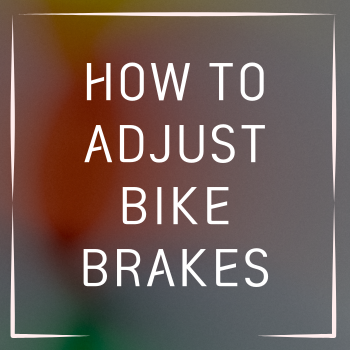Whether you are a seasoned cyclist or a beginner rider, knowing how to properly adjust your bike brakes is essential for a safe and enjoyable biking experience. Properly adjusted brakes not only ensure smooth riding but also improve overall bike performance. In this comprehensive guide, we will walk you through the easy steps to adjust various types of bike brakes, common issues with brake pads, the importance of brake cable maintenance, and troubleshooting techniques for different brake systems.
How to Adjust Disc Brakes on Your Bike
Disc brakes are a common type of braking system used on modern bicycles due to their superior stopping power and modulation. Understanding disc brake adjustment is crucial for maintaining optimal brake performance.
When adjusting disc brakes, you will need a few tools such as an Allen key set, a clean rag, and possibly a disc brake pad spreader tool. Follow this step-by-step guide to adjust your disc brakes:
- Start by checking the alignment of the caliper and the rotor.
- Adjust the position of the brake pads by loosening the mounting bolts and aligning them with the rotor.
- Check the brake lever feel and adjust the cable tension using the barrel adjuster.
Common Issues with Brake Pads and Solutions
Worn brake pads are a common issue that can affect braking performance and safety. Signs of worn brake pads include reduced braking power, squealing noises, or visible wear indicators on the pads.
To replace brake pads, you will need a new set of compatible brake pads, a hex key for removing the old pads, and possibly a flat-head screwdriver for some models. Regularly inspecting and cleaning your brake pads can help extend their lifespan and maintain optimal braking efficiency.
Importance of Brake Cable Maintenance
Brake cables play a vital role in transmitting the force from the brake lever to the calipers. Keeping the brake cable tension adjusted correctly is essential for responsive braking performance.
To adjust the cable tension, start by checking the current tension using the barrel adjuster located near the brake lever. If the cable is loose, tighten it by turning the adjuster clockwise. If the cable is too tight, loosen it by turning the adjuster counterclockwise. Replace brake cables if they show signs of fraying or damage to ensure reliable braking.
Caliper Brake Adjustment Techniques
Caliper brakes are a traditional type of braking system commonly found on road bikes and older models. Understanding the basics of caliper brakes and how to adjust them can help maintain consistent braking performance.
To adjust the caliper brakes, start by inspecting the brake pads for wear and alignment. Loosen the mounting bolt that secures the caliper to the frame or fork, adjust the position of the caliper, and then tighten the bolt securely. Test the brakes to ensure they engage smoothly without any rubbing or dragging.
Troubleshooting V-Brake Problems on Your Bicycle
V-brakes, also known as linear-pull brakes, are a popular choice for mountain bikes and some hybrid models due to their strong stopping power and ease of maintenance. Identifying common V-brake issues and knowing how to adjust them can help you ride with confidence.
To adjust V-brakes for optimal performance, start by checking the brake pad alignment and toe-in adjustment. Squeeze the brake lever to engage the brakes and check for any rubbing or uneven pad wear. Adjust the tension on the brake cable if needed to ensure even braking on both wheels.
